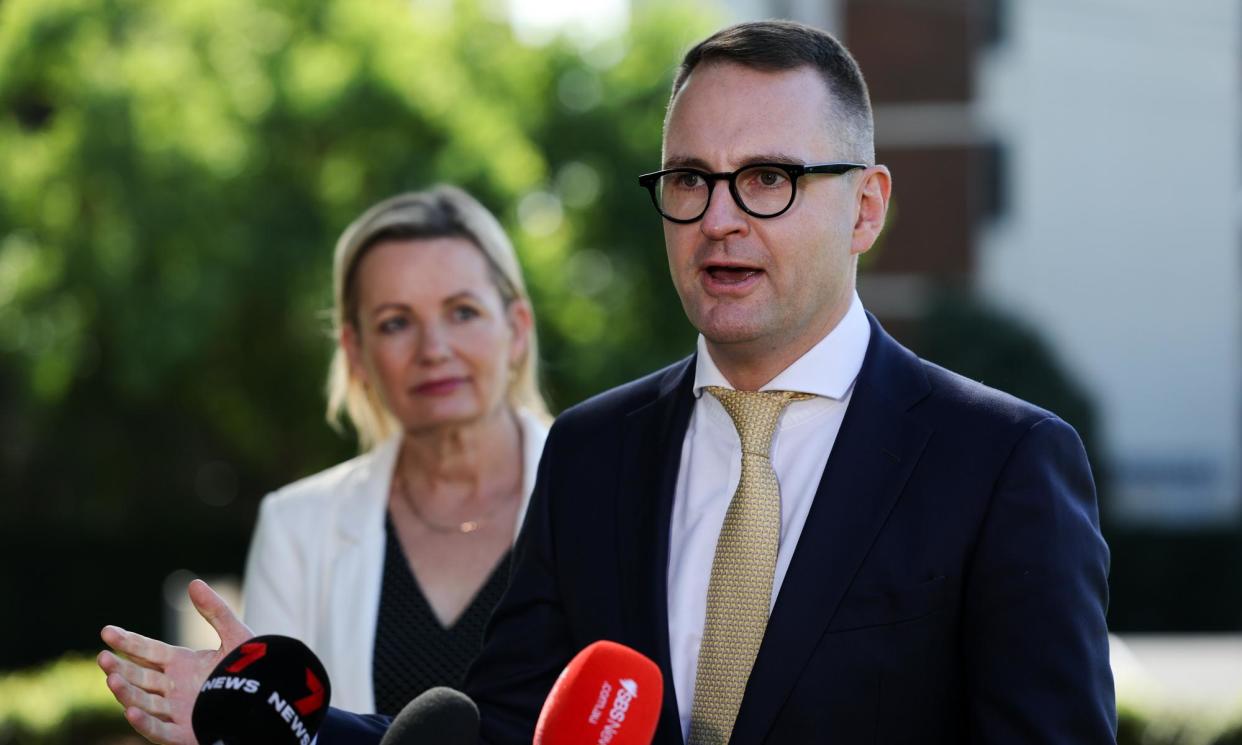Coalition to campaign on balancing housing construction and migration, says Andrew Bragg

The opposition leader, Peter Dutton, will make home ownership a “core” election issue by linking the net migration intake to housing completions, Senator Andrew Bragg says.
Bragg, appointed shadow assistant minister for housing affordability in the March reshuffle, argued in a speech to the Sydney Institute on Tuesday that the Coalition is best able to address the “train wreck” imbalance between migration and housing construction.
Advocates have warned that migrants are being scapegoated for rising housing costs caused by a long-term undersupply of homes for sale and rent.
While experts agree that Australia is experiencing a temporary spike in arrivals that is yet to catch up to projected pre-pandemic population levels, migration has become a potent political issue with even mainstream economists like Chris Richardson suggesting it may need to be slowed down until housing supply improves.
In an advance copy of his speech seen by Guardian Australia, Bragg said that the Liberal party founder, Robert Menzies is “the founding father of the Australian Dream” who “was able to bring about a housing boom, at a time when there was a lack of housing supply, and record high migration intake”.
Bragg said that at the end of the Chifley Labor government in 1949 “net overseas migration was 149,000 … but only 57,000 dwellings were completed in 1949-50”.
“This was roughly only one new dwelling for every 2.6 migrants,” he said.
“In other words, we have seen this migration-housing imbalance train wreck before.
“By the end of the Menzies government, dwelling completion had risen to 113,000 in 1965-66, with net migration stabilising at 112,000 in 1965.”
As a result of raising completions, home ownership rates were raised to almost 72% in the 1980s up from 50-55% in the late 1940s, he said.
“Addressing this issue will be at the core of our offering at the upcoming election.”
In a section of the speech warning that “migration figures are soaring while [housing] supply dwindles”, Bragg notes net migration has reached a “record high” of 548,800 in the year to September 2023, while only 170,000 new dwellings were constructed.
“This is a ratio of one house for every 3.2 migrants, worse than the 2.6 migrants to housing ratio at the end of the Chifley government.
“Compare this with the historic peak of 216,000 dwellings completed under the Coalition in 2016-17, with a net migration figure that year of 262,000. This was a ratio of 1.2 - much closer to parity.
“With only an additional 67,000 dwellings being approved since September 2023, Labor is placing unneeded strain on the housing market.”
Despite Dutton and senior shadow ministers, including Dan Tehan, welcoming an increase in arrivals after Covid border closures were lifted, the Coalition has since politicised the rate of arrivals.
Related: Changes to Australia’s property tax concessions could net $60bn over decade, crossbench senators say
Earlier in April Dutton hinted that the opposition is working on a policy to set a target for net migration based on the relativity with new dwelling construction.
On ABC Brisbane, Dutton noted that in the last 10 years – with the exception of Covid – “the number of … new dwelling builds has roughly matched the number of people coming in through the migration program at about 170,000”.
The Albanese government has promised that new visa settings including a crackdown on international students will contribute to the rate of net migration halving by mid-year.
But Bragg criticised the fact that those reforms after the migration review “exclude construction workers from the core skills temporary migration stream”, which he says “has made it harder for chronic skills shortages in the construction industry to be filled by skilled migrants”.
The Grattan Institute recently reported that migrants who arrived in Australia less than five years ago account for just 2.8% of the construction workforce, but account for 4.4% of all workers in Australia, he said.
“By reprioritising construction skills within the core skills temporary migration scheme, temporary workforce bottlenecks could be eased while we train a bigger domestic workforce – without adding to overall housing demand by bringing in more migrants,” Bragg said. “This would help to lower home build prices.”
In March Bragg flagged an expansion of the Coalition’s super for housing policy, including the possibility that homeowners should be able to pay their super into their mortgage offset accounts.

 Yahoo News
Yahoo News 
